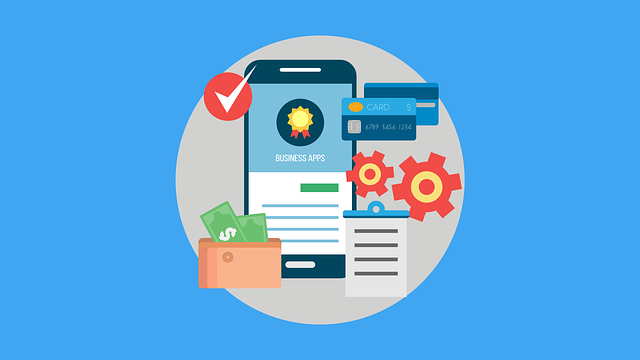AI Business Chatbots powered by NLP and machine learning are transforming customer interaction through automation, personalization, and seamless integration with existing systems. In the context of AI-based allergy detection tools, these chatbots gather detailed dietary information to aid in identifying potential allergens and offering tailored recommendations for food allergy management. When selecting such tools, prioritize accuracy, integration capabilities, user experience, industry-specific data handling, privacy/security, scalability, and ease of use. A well-planned implementation strategy, including defining roles, choosing the right platform, designing conversational flows, testing, integrating, monitoring performance, and gathering feedback, ensures a successful deployment that enhances user experiences without complicating workflows.
“Unleash the power of AI with innovative business chatbot implementation services. In today’s digital landscape, AI chatbots are revolutionizing customer engagement and operational efficiency. This comprehensive guide explores the benefits and key features of integrating AI into your business processes, highlighting the importance of choosing the right AI-based allergy detection tools for precise and seamless interactions. Discover a step-by-step approach to integrate chatbots into your workflow, enhancing productivity while ensuring optimal user experiences.”
- Understanding AI Business Chatbot Implementation: Benefits and Key Features
- Choosing the Right AI Allergy Detection Tool for Your Business Needs
- Step-by-Step Guide to Seamlessly Integrate AI Chatbots into Your Workflow
Understanding AI Business Chatbot Implementation: Benefits and Key Features

AI Business Chatbots are transforming the way companies interact with their customers, offering a host of benefits that can significantly enhance operational efficiency and customer satisfaction. These intelligent virtual assistants leverage advanced natural language processing (NLP) and machine learning algorithms to understand user queries and provide contextually relevant responses.
Implementing an AI-driven chatbot can streamline various business processes by automating repetitive tasks such as answering frequently asked questions, scheduling appointments, or providing product recommendations. Moreover, these chatbots can learn from customer interactions, continually improving their accuracy and effectiveness over time. Key features include personalized conversations, seamless integration with existing systems, and the ability to handle a high volume of inquiries simultaneously, ensuring round-the-clock support for customers and employees alike. In the context of AI-based allergy detection tools, chatbots can also assist in identifying potential allergens by gathering detailed dietary information from users, offering tailored recommendations to manage food allergies effectively.
Choosing the Right AI Allergy Detection Tool for Your Business Needs

When considering AI-based allergy detection tools for your business, it’s crucial to align your choice with specific needs and operational contexts. Different tools excel in various aspects such as accuracy, integration capabilities, and user experience. For instance, some may offer superior precision in identifying allergens but lack seamless integration with existing systems, while others provide robust integrations but may compromise on detection accuracy.
Evaluating potential AI allergy detection tools should involve assessing their ability to handle your industry-specific allergen data, ensure data privacy and security, and accommodate future scalability needs. Additionally, consider the tool’s ease of use for both employees and customers, especially if it includes features like self-service allergy checks or personalized recommendations. This ensures a smooth implementation process that enhances the overall user experience without complicating existing workflows.
Step-by-Step Guide to Seamlessly Integrate AI Chatbots into Your Workflow

Integrating AI chatbots into your business workflow can seem daunting, but with a clear strategy and step-by-step approach, it becomes a smooth process. Here’s a concise guide to help you seamlessly introduce these intelligent assistants:
1. Define Your Chatbot’s Role: Begin by identifying specific tasks or inquiries that an AI chatbot can efficiently handle. For instance, customer support, scheduling appointments, answering FAQ, or even managing simple sales queries. Consider the pain points in your current workflow and how a chatbot can provide quick, accurate solutions, especially when it comes to implementing AI-based allergy detection tools for personalized recommendations and safety measures.
2. Choose the Right Platform: Select an AI chatbot platform that aligns with your business needs and technical capabilities. Look for options that offer customization, easy integration with existing software, and robust analytics. Ensure the platform provides natural language processing (NLP) capabilities to understand user queries accurately, a vital aspect when dealing with allergy-related conversations where context is key.
3. Design Conversational Flow: Map out the conversation flow, including possible user inputs and desired outputs. Create a database of relevant responses and ensure the chatbot can handle various scenarios, including edge cases. This step involves crafting engaging and helpful dialogues while maintaining simplicity to foster effective communication.
4. Train and Test: Train your chatbot using diverse datasets to enhance its accuracy and adaptability. Utilize real-world examples and feedback loops to refine its performance. Thorough testing ensures the chatbot provides reliable responses, especially when dealing with sensitive health-related topics like allergies. This phase may involve beta testing and user feedback collection for continuous improvement.
5. Implement and Integrate: Once your chatbot is trained and ready, integrate it into your existing systems. Seamless integration ensures a smooth transition, allowing employees and customers to adapt quickly. Configure the chatbot to access necessary data sources, such as customer databases or product catalogs, to deliver accurate and contextually relevant responses.
6. Monitor and Optimize: Regularly monitor your chatbot’s performance and gather user feedback. Analyze logs and metrics to identify areas for improvement, ensuring continuous enhancement of its capabilities. Optimize conversational flows, update training datasets, and refine responses based on real-world interactions to make your AI chatbot an invaluable asset.
Implementing AI business chatbots can significantly enhance customer service, streamline workflows, and provide valuable insights. By choosing the right AI allergy detection tools tailored to your business needs, you can ensure efficient and accurate interactions with customers. Following a structured approach for integration, as outlined in this guide, will enable seamless adoption of these innovative technologies, fostering productivity and enhancing user experiences.
